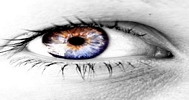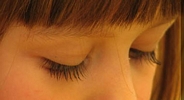Fashion magazines and the advertisements found in them have an incredibly negative impact on women's self-image. A large percentage of mass media advertising is geared toward beauty products, and an even larger percentage of women are dissatisfied with their bodies because of this.
Body Image
A self-image is the mental conception of the self. A positive self-image affects quality of life, and can be a determining factor of success both socially and professionally. The average American woman is 5'4" tall and weighs 140 pounds. In contrast, the average fashion model is 5'11" tall and weighs 117 pounds. Women are bombarded with images of these beautiful women on a consistent basis, and 70% of women feel more depressed after viewing images of models. It should come as no surprise then that 58% of 13 year old girls and 78% of 17 year old girls are unhappy with their appearance.
Diet Trends
With so many women dissatisfied with their physical appearance it's only natural for a portion of them to take action to improve their looks. The dieting statistics of young girls and women in this country are startling.
Two out of every five females would trade five years of their life in exchange for meeting their goal weight. Young girls are more afraid of becoming fat than they are of war or of being diagnosed with cancer. One-third of females are on a diet at any given time, and the trend starts early with the average girl going on her first diet at the age of eight. It would be quite simple to alter advertisements to feature more realistic images of women, but someone stands to gain from all this unhappiness. The diet industry sees profits of approximately $40 billion annually.
Advertising
If the diet industry stands to make a profit they must advertise their products to a broad and receptive audience. Teenage girls and young women are the perfect target, and fashion magazines are the perfect medium. Twenty-two percent of teenage girls read fashion publications. Magazines for men feature appearance-altering advertisements, but not at the rate of those for women. Women's magazines feature ten times more weight loss articles than men's.
Fitness articles have the potential to be positive if they focus on the health benefits of exercise, but 74% of fitness articles in magazines for women cite "becoming more attractive" as the main reason to exercise. One of every three articles in these publications has an emphasis on appearance, ¾ of all magazine covers feature an article on altering the physical appearance. In addition, 50% of magazine advertisements sell their products using an approach relating to beauty.
The portion of a magazine that isn't advertising is filled with information on beauty and fashion. Seventy percent of the additional content falls under these two categories. The articles are filled with advice, tips, and tricks which are used by 41% of teenage girls in their daily lives. An even larger percentage, 80%, read these magazines. The themes of these magazines vary little. Thirty-seven percent of the articles are about looks, 35% pertain to dating, and 32% to fashion.
Magazines for Men
There are currently over 600 magazine titles available for men on a wide variety of topics. There also, however, have an impact on women. Of the 353 business and finance magazines available only one was geared toward women. Females were featured on six of the covers, but one was scantily clad in a bikini and the other was promoting a magazine for "C-Level" executives. The top categories for men's magazines are automotive, fitness, outdoor, sports and recreation, and weaponry.
The selection available for women is a bit more limited. Though numerous publications exist they typically involve the same topics – beauty and fashion. Whereas men have magazines with topics pertaining to a variety of hobbies, activities, and interests, women are limited to the categories of bridal, fashion and beauty, home and cooking, health, and women's interest. Notice the lack of any actual hobbies or activities. Apparently women are meant only to cook, clean, and dress well. Of the 27 magazines in the health genre only three pertained to physical activity. The rest were geared, of course, toward beauty and fashion. One magazine, "New You", is all about the benefits of plastic surgery.
Questions
To summarize my points I have some important questions to ask about women and magazine advertising. First, why are there no articles available on current events or relevant social issues? Also, why are all of the interviews conducted with celebrities? Why are prominent, influential females excluded? Is the magazine industry intimidated or scared those women will challenge their shallow messages? I believe it is clear that women's magazines hinder all progress made by feminists by making women believe that they are worth nothing more than their physical appearance.


